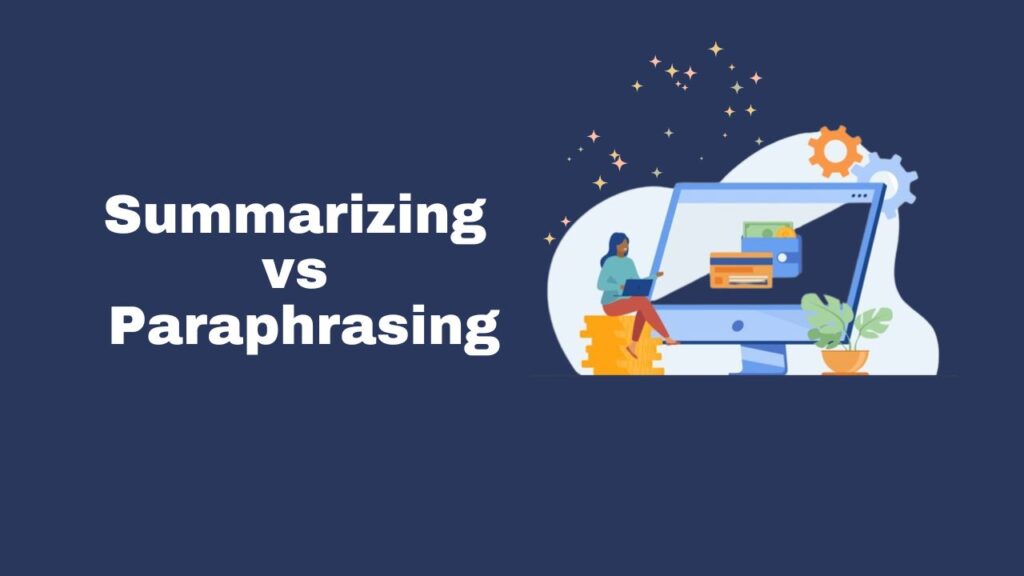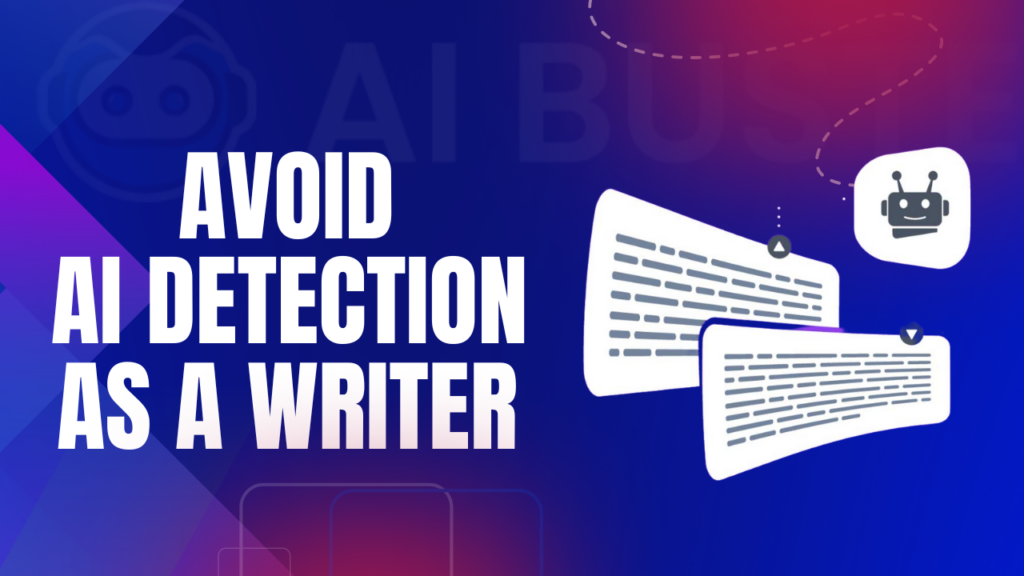Summarizing and paraphrasing techniques help in writing a ton to convey a message clearly. Some people often mix up paraphrasing with summarizing.
Here are some key differences between the two.
Summarizing is the representation of a whole idea in short form. On the other hand, paraphrasing represents the same information but with different words that don’t match the primary source.
Because of the dissimilarity in the level of detail, summarizing content takes less time than paraphrasing.
Let’s give you a comprehensive idea of summarizing and paraphrasing. It will assist you in making the most of both, mainly if you use AI writing tools.
What Is Summarizing?
Summarizing is presenting information in a shorter form compared to the main source. However, the whole message or concept of the main text will remain the same.
In summarizing, only the most essential part of the information is usually presented. You can compare it to a book review or movie trailer.
What Is Paraphrasing?
Paraphrasing is about presenting information or text differently than primary sources or text. Almost all of the main source’s text is presented using different words or sentences.
In other words, we can also consider paraphrasing as presenting information in its terms, following the primary source.
Have you ever seen someone interpreting a language? Paraphrasing is more like the job of an interpreter but in text form.
However, paraphrasing can be time-consuming and takes a long time, unless you use a tool. In the era of AI revolution, why would you take it on your hand and do it manually?
An AI writing tool can be a solution in this case. But, it’s essential to choose an AI writing tool that can work competently to paraphrase content in no time.
Summarizing vs Paraphrasing: Comparison
Don’t treat summarizing and paraphrasing as the same things. Here’s a side-by-side comparison that can help you differentiate the two techniques.
| Comparison Points | Summarizing | Paraphrasing |
| Purpose | Presenting core information or idea | Presenting the whole report or idea |
| Length (Compared to source) | Short | Similar |
| Level of Detail | In short | Detailed |
| Time Required | Less | More |
| Style | Simple | Complex |
| Plagiarism Tendency | Less | More |
Let’s go through them in detail.

1. Purpose
Here is where the difference between summarizing and paraphrasing makes much sense, based on purpose. Summarizing is presenting critical information from a source, avoiding the unimportant part.
Let’s say you have read a story, and one of your friends asks you to describe it briefly. Here, you should tell the story’s central theme rather than reading out line by line. And when you do this in a written way, this is called summarizing.
On the other hand, the main purpose of paraphrasing is to present the whole picture of something but using your own words and style.
Here, you must write almost the same ideas from the source you follow, more often like an imitation with unique characteristics.
2. Length
The actual length of the summarized and paraphrased text can vary. However, compared to the source, the size of the summarized text is way shorter than the main source.
For example, a book is 30,000 words, but you can read its review or summary in even 300 words.
In the case of paraphrasing, the length of the text is similar to the main text. And this happens due to the purpose or intention of writing. Almost all the information from the main source must be presented here.
3. Level of Detail
Summarizing never dives into too much detail. Instead, the critical focus of summarizing is to shed light on the key information. But paraphrasing is usually in-detailed. Here, writers have to share all data from the information source.
Time Required
There is no universal word count for writing a summary. The time required will depend on how many words must be written to summarize the text adequately. But compared to paraphrasing, summarizing takes less time.
Suppose you are asked to summarize and paraphrase a 1000-word text. It will require comparatively more time to paraphrase the content than summarizing.
4. Style
The style of summarizing is more straightforward than paraphrasing. And here, the intention of two techniques comes into play once again.
Summarizing consists of using simple words and sentences to write a summary. But in the case of paraphrasing, using complex words and phrases is a common scenario to make things a little different.
What Are the Similarities Between Summarizing and Paraphrasing?
Along with some significant differences, there are some points where summarizing and paraphrasing are the same.
And that’s the reason some people find it hard to differentiate the two techniques. Here are the similarities;
When Should You Use Summarizing?
When you have to present information or ideas in a short way to let people understand the core concept, you should use summarizing. Moreover, you can also use summarizing when describing complex ideas so others can properly relate to them.
Based on your work field, you will often find the importance of summarizing—for example, academic writing or other cases.
When Should You Use Paraphrasing?
In most cases, paraphrasing is used to avoid plagiarism. When you paraphrase the main text correctly, it can reduce the chance of plagiarized text.
Besides, if the main text is hard to understand, writers can also paraphrase to simplify the text for others.
Are Summarizing and Paraphrasing Detected by Plagiarism Checkers?
Yes, chances are that summarizing and plagiarism checkers detect paraphrasing. And that’s what we notice in most AI writing tools out there. Plagiarism checkers nowadays are very much advanced.
Even if you summarize and paraphrase text on your own, chances are the text can get plagiarized. The same thing can happen when you use AI writing tools that are not quite efficient.
However, you can use AI writing tools like AI Buster, which generates plagiarism-free content. AI buster uses advanced algorithms like natural language processing to scrap existing info from the web and write content in its own way.
With AI Buster, you can finally produce content in bulk without getting plagiarized and later penalized by Google.
If you’re into blogging and want to harvest the maximum potential of Artificial Intelligence to your favor, give AI Buster a try. It can produce 1000s of articles with only one click.
All you have to do is, give it all your topics or Keywords, and AI Buster will take care of the rest.
It will write all the content that doesn’t get detected by plagiarism and AI writing checkers. Once written, AI Buster will also publish all the content to your WordPress or Shopify website. It will even include images if you’re worried about visual appeal of your blog.
Frequently Asked Questions
Is Summarizing and Paraphrasing Ethical?
Summarizing and paraphrasing is ethical unless the written text falls into the plagiarism trap.
In most academic writing, we see the rapid use of summarizing. The same goes for paraphrasing if you intend to present information simply using your own words.
Is It OK to Paraphrase When Summarizing?
Yes, there is nothing wrong in the case of paraphrasing when summarizing. You are supposed to use your own words in both paraphrasing and summarizing when presenting information. But you have to be careful when paraphrasing and summarizing to avoid plagiarism.
What Is the Difference Between a Summary and a Paragraph?
Paragraphs do not always come with the critical points of any story or information. But, when you summarize content, it should contain the main objective of the information source. A Paragraph provides detailed information, whereas a summary does not.
Final Words
Both Summarizing and Paraphrasing are great ways to present text content with different perspectives. And if you’re planning on doing them for the purpose of blogging, nothing can beat a good AI writing tool.
As the best AI writing tool in themarket, AI Buster will be an essential way to go. But make sure you choose the tools to avoid plagiarism so there is no doubt about your work.




